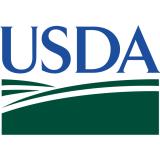Increased Risk for Drought Development in Portions of the Midwest Over the Next Few Weeks
Key Points
- Most of the Midwest region has been much drier than normal in the past 4 to 6 weeks, which includes the states of Illinois, Indiana, Iowa, Kentucky, Michigan, Minnesota, Missouri, Ohio, and Wisconsin (Figure 1).
- 27% of the region is considered abnormally dry, with 9% of the region in drought—primarily across Missouri and western Iowa, according to the U.S. Drought Monitor. The moderate to extreme (D1–D3) drought in Missouri has developed since mid-April.
- USDA's National Agricultural Statistics Service reports increasingly dry topsoil (Figure 2), poor pasture conditions in Missouri, and limited moisture for newly planted crops. There are also reports of lower-than-normal streamflow and increased watering needs for gardens, perennials, and young trees. Reports on current conditions can be viewed through the Drought Impacts Multi-Tool (Figure 3).
- The 8–14 day outlook indicates a strong possibility for above-normal temperatures and chances for below-average precipitation across the Midwest (Figures 4–6).
- There is concern that the forecasted weather will likely worsen already dry conditions and potentially—and quickly—induce drought in some areas. Hotter temperatures will extract more moisture from the surface through evapotranspiration, and in the absence of additional rainfall, conditions can dry out very quickly.
As conditions evolve, accurate reports on conditions and drought impacts are critical to accurately assess what parts of the region are in drought and what parts are not. Whether your area is currently wet, close to normal, or dry, please consider reporting conditions and any drought impacts you see or hear via the Condition Monitoring Observer Reports (CMOR) from the National Drought Mitigation Center. If you are already a CoCoRaHS observer, we encourage you to submit a Condition Monitoring Report.
The U.S. Drought Monitor depicts the location and intensity of drought across the country using 5 classifications: Abnormally Dry (D0), showing areas that may be going into or are coming out of drought, and four levels of drought (D1–D4).
The U.S. Drought Monitor is a joint effort of the National Drought Mitigation Center, U.S. Department of Agriculture, and National Oceanic and Atmospheric Administration.
This map depicts drought conditions across the Midwest U.S. as of May 23, 2023.
U.S. Drought Monitor Categories
Abnormally Dry (D0)
Abnormally Dry (D0) indicates a region that is going into or coming out of drought. View typical impacts by state.
Moderate Drought (D1)
Moderate Drought (D1) is the first of four drought categories (D1–D4), according to the U.S. Drought Monitor. View typical impacts by state.
Severe Drought (D2)
Severe Drought (D2) is the second of four drought categories (D1–D4), according to the U.S. Drought Monitor. View typical impacts by state.
Extreme Drought (D3)
Extreme Drought (D3) is the third of four drought categories (D1–D4), according to the U.S. Drought Monitor. View typical impacts by state.
Exceptional Drought (D4)
Exceptional Drought (D4) is the most intense drought category, according to the U.S. Drought Monitor. View typical impacts by state.
The U.S. Drought Monitor depicts the location and intensity of drought across the country using 5 classifications: Abnormally Dry (D0), showing areas that may be going into or are coming out of drought, and four levels of drought (D1–D4).
The U.S. Drought Monitor is a joint effort of the National Drought Mitigation Center, U.S. Department of Agriculture, and National Oceanic and Atmospheric Administration.
This map depicts drought conditions across the Midwest U.S. as of May 23, 2023.
The U.S. Drought Monitor is updated weekly on Thursdays, with data valid through the previous Tuesday at 7 a.m. Eastern.
Figure 1: Percent of Normal Precipitation from April 25–May 24, 2023
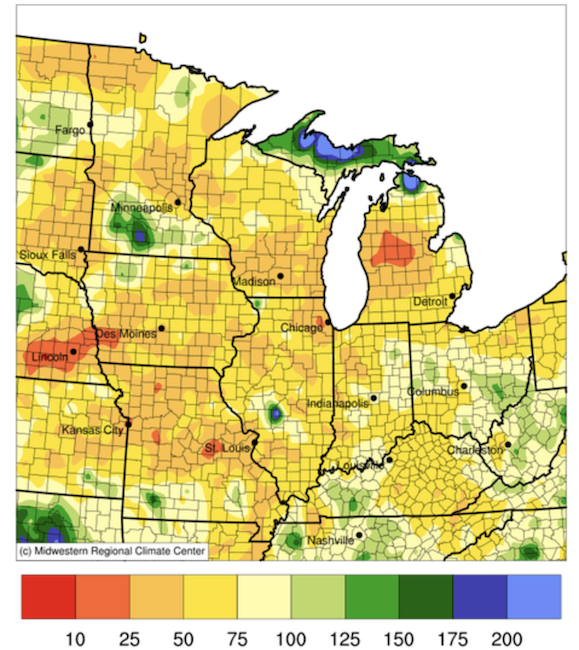
Figure 2: Topsoil Moisture (Percent Rated Short to Very Short) – Week ending May 21, 2023
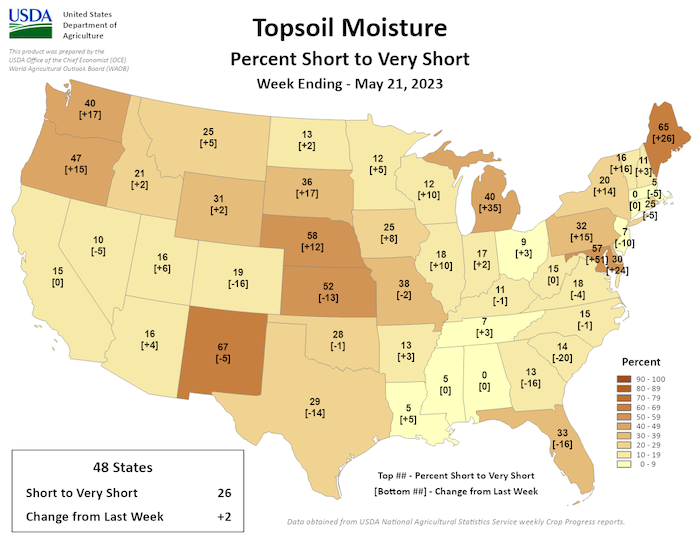
Figure 3: Screenshot of the Drought Impacts Multi-Tool
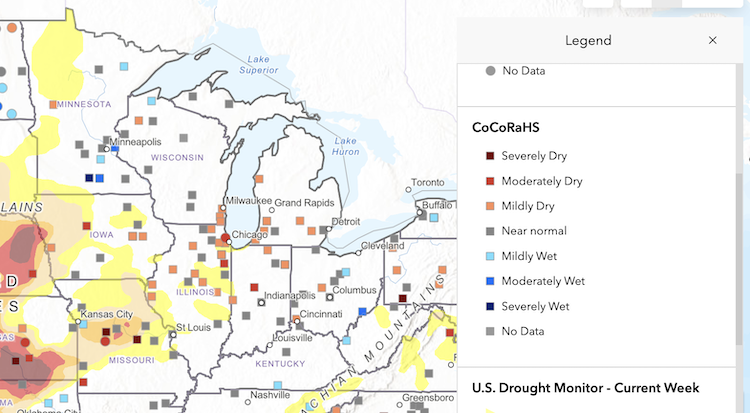
Figure 4: Quantitative Precipitation Forecast for the Next 7 days (May 25–June 1, 2023)
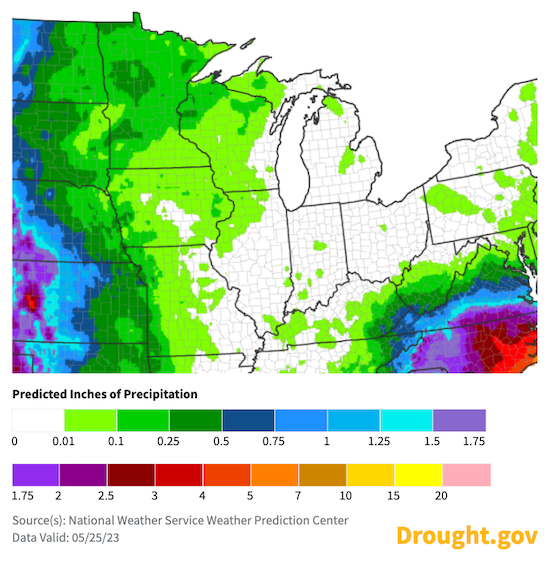
Figure 5: 8–14 Day Temperature Outlook (Valid June 1–7, 2023)
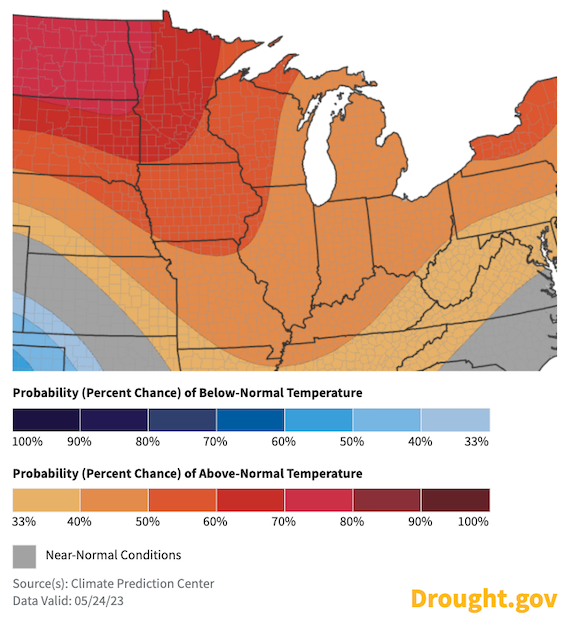
Figure 6: 8–14 Day Precipitation Outlook (Valid June 1–7, 2023)
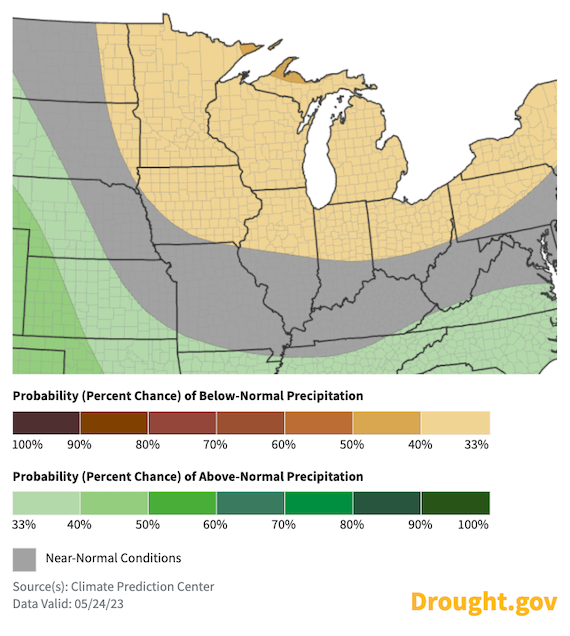
Report Local Drought Impacts
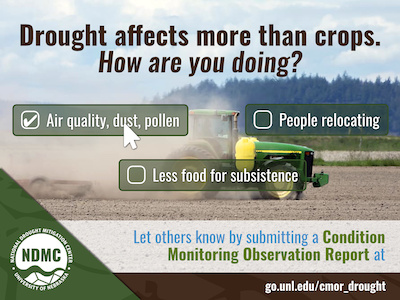
Report your local drought impacts through the Condition Monitoring Observer Reports (CMOR) system.
For More Information
- NIDIS and its partners will issue future updates as conditions evolve.
- More local information is available from the following resources:
- Your state climatologist (see author list below)
- National Weather Service Drought Information Statements
- The North Central U.S. Climate and Drought Summary & Outlook Webinar on June 15, 2023 provided more information about conditions, impacts, and outlooks.
- Other resources:
- Illinois drought development press release (May 23, 2023)
- Submit a Condition Monitoring Observer Report (CMOR).
- View CMOR and other drought impact reports on the Drought Impacts Multi-Tool.
Prepared By
Molly Woloszyn
NOAA/National Integrated Drought Information System (NIDIS), CIRES/CU Boulder
Midwest State Climatologists:
- Trent Ford, Illinois (twford@illinois.edu)
- Beth Hall, Indiana (bethhall@purdue.edu)
- Justin Glisan, Iowa (Justin.Glisan@iowaagriculture.gov)
- Jerry Brotzge, Kentucky (jerald.brotzge@wku.edu)
- Jeff Andresen, Michigan (andresen@msu.edu)
- Luigi Romolo, Minnesota (luigi.romolo@state.mn.us)
- Anthony Lupo (acting), Missouri (LupoA@missouri.edu)
- Aaron Wilson, Ohio (wilson.1010@osu.edu)
- Steve Vavrus, Wisconsin (sjvavrus@wisc.edu)
Dennis Todey
USDA Midwest Climate Hub
Doug Kluck
NOAA/National Centers for Environmental Information
Melissa Widhalm
Midwestern Regional Climate Center/Purdue University
This drought status update is issued in partnership between the National Oceanic and Atmospheric Administration (NOAA) and the U.S. Department of Agriculture (USDA) to communicate a potential area of concern for drought expansion and/or development within the North Central U.S. based on recent conditions and the upcoming forecast. NIDIS and its partners will issue future drought status updates as conditions evolve.




